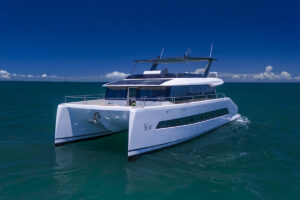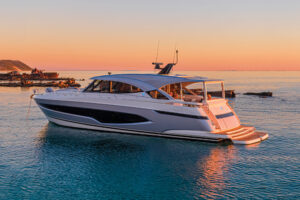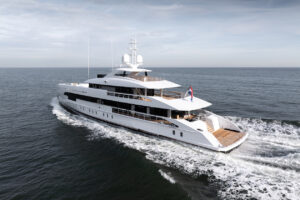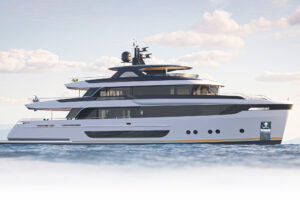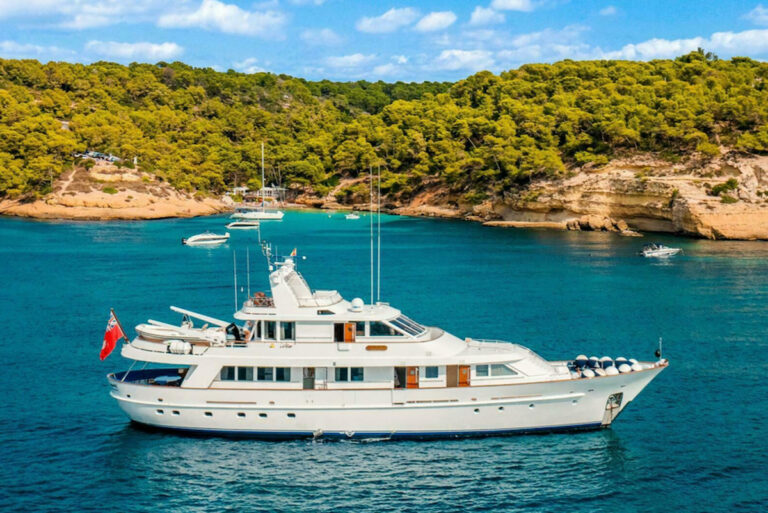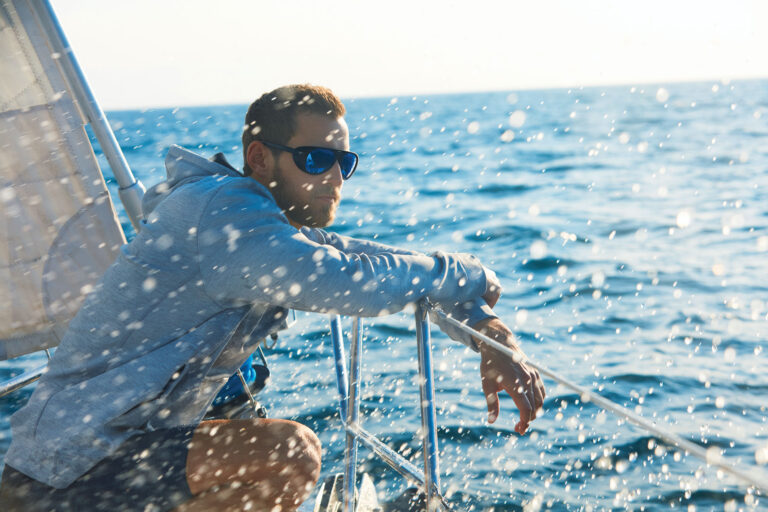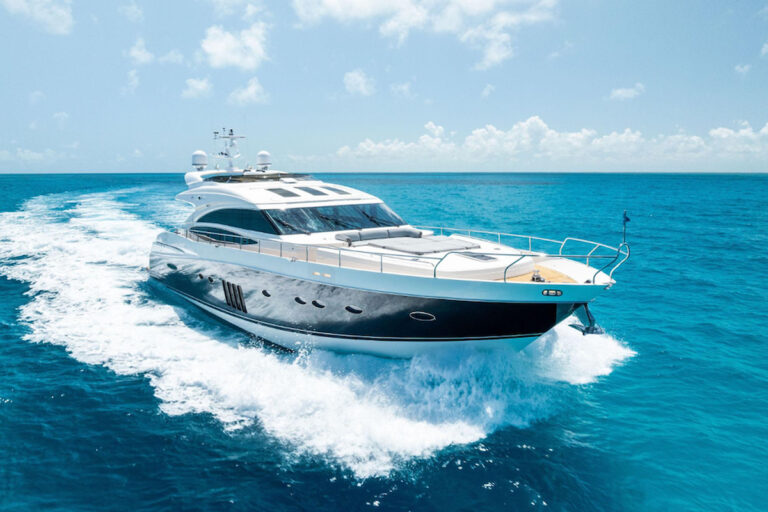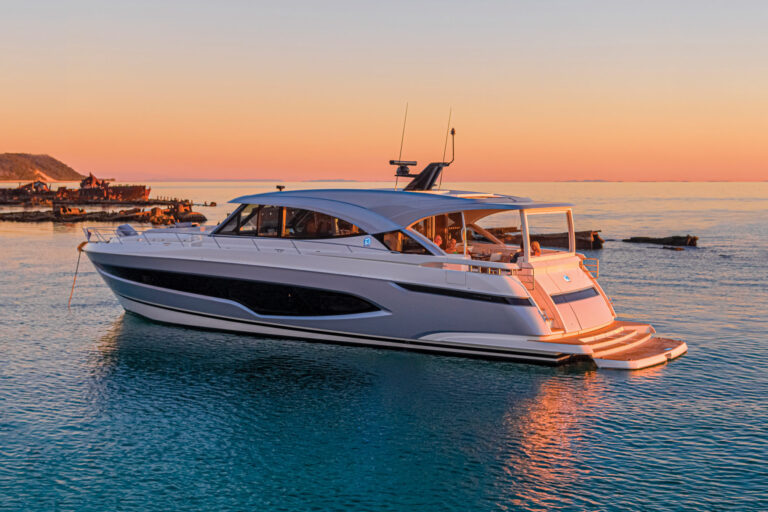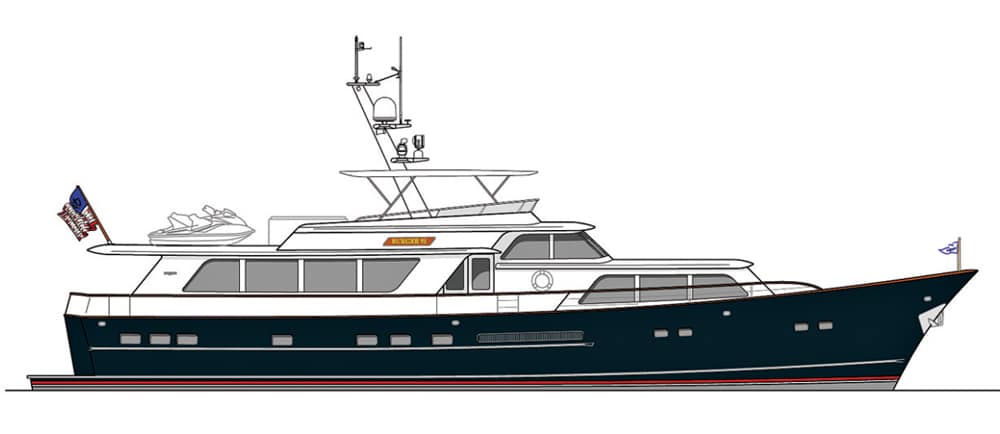
Burger Classic 90
The strong sheer line, aggressive clipper bow and beautifully proportioned superstructure identify this Classic 90 as a Burger — maybe a model plucked from the archives of traditional yachts that Jack Hargrave drew for the company in the 1960s and 1970s. The family resemblance is clear, as Burger intended, but the 90 is new — naval architecture and styling by the company’s in-house design staff. She’s the middle sibling of a line that eventually will include a Classic 78 and a Classic 100.
Timeless may be the best single-word summary of this design — as I add another stroke to the beating this cliché has taken over the years — but relatively narrow, low-profile yachts simply seem to please us for centuries. When you examine all the examples of this type, designed since the early 1900s, you’d think that the artist’s job would be fairly easy. It’s not. In fact, maintaining the illusion of a low profile is among the designer’s most difficult tasks. Increasing the yacht’s length, though, eases the burden. As the design team adds length to a given concept, it can lengthen the foredeck, the afterdeck and, most important, the superstructure relative to the overall length. Stretching the superstructure permits the big windows in the salon and pilothouse and, on this Burger Classic 90, the windows in the galley just forward of the pilothouse.
Burger’s use of a dramatically sweeping sheer line and equally impressive clipper bow establishes the Classic 90’s persona as a competent and luxurious passagemaker. On paper and in a direct profile drawing, we won’t notice how the curved stem and substantial flare in the forward sections work together. In the rendering, and more strikingly in three dimensions, the degree of flare in the topsides and curve of the stem may be close to equal, giving the forward end of the yacht a lovely visual harmony that wouldn’t exist if the stem were straight or the topsides flared less aggressively. Also, the high bow relative to much less freeboard aft tricks our eyes into seeing a lower profile — as do the rub rail, clusters of portlights and grill over the fresh-air vent to the amidships engine room.
In keeping with the traditional theme of this design, the superstructure is upright — a simple, logical and practical approach to the yacht’s aesthetics and to making the most of its interior volume. Extreme angles, tumblehome and scalpel-shape windows would have created a nautical monster to rival Frankenstein. Burger’s adherence to the basic laws of good design and proportion shows in the handsome parallelogram formed by the windows and styling panels of the lounge/dining area abaft the pilothouse. We see the angles repeated in the after terminus of the f lying bridge and the after end of the windows in the pilothouse. The rake of the pilothouse windshield and forward fascia of the main deck are the same. If you would extend these lines skyward, all of them would converge.
Belowdecks, Burger dedicated the forward third of the hull to the crew’s quarters, which have direct and private access to the galley on the main deck and to the machinery spaces immediately aft on the lower deck. The owner’s stateroom spans the entire beam in the aftermost area of the lower deck. A pair of guest staterooms separate the master from the engine room.
The Classic 90 rides on a semidisplacement hull. Her fine entry transitions into a run of modest deadrise at the transom. A beam/DWL ratio of about four indicates that she’ll be an economical and seakindly vessel — a perfect choice for owners who want a classical feel in an otherwise 21st century yacht.
LOA: 91’5″
Beam: 20’3″
Draft: 5’4″
Displ.: 99 long tons
Fuel: 2,750 gal.
Water: 1,000 gal.
Engines: 2 x 1,136-hp Caterpillar C18 ACERT diesels
Speed: 17-18 knots (cruise 85 percent load)
Range: 700 miles at 10-11 knots
Burger Boat Co., 920-684-1600; www.burgerboat.com

